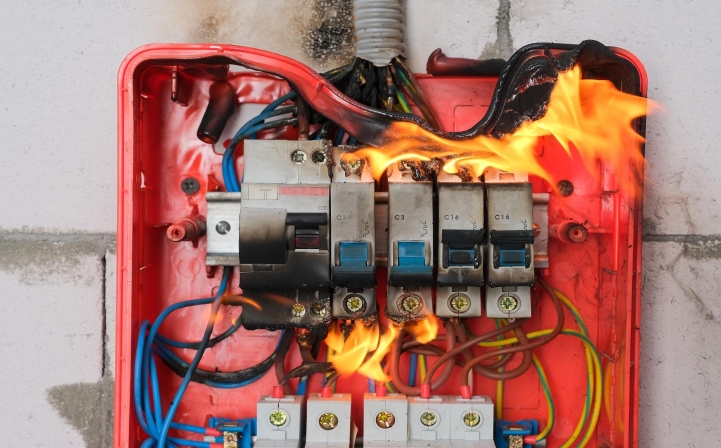Snap! Crackle! Pop!
These are generally noises you don’t want to hear anywhere near your electrical equipment or appliances. Often, these noises indicate that there is a surge of electricity running through your system and may be frying your electronics.
What are power surges, how can they be dangerous, and how can you prevent them? Find out here!
What Is a Power Surge?
A power surge is exactly what it sounds like. Somehow, the flow of electricity is interrupted and then starts up again suddenly, sending a flood of electricity into the system. They can also happen when an outside source pushes excess electricity into the system.
The most common danger from power surges is to your electrical devices. The sudden surge of energy can damage the device. Even smaller power surges over time can degrade electronic devices and cause them to wear out faster.
Less commonly, power surges can lead to electrical fires that may damage part of your home or even burn it to the ground.
What Causes a Power Surge?
There are various things that cause power surges. The good news is that many of them are fairly easy to protect against. Here are some of the most common causes:
- Damaged circuit breakers: check breakers after they’ve been tripped to ensure they are still functioning correctly
- High-powered electrical devices: refrigerators, AC units, and space heaters are common culprits for causing a surge when they first turn on
- Old, degraded wiring: replace old wiring as needed to prevent surges and fires
- Tree limbs: may touch the power lines by swinging in the wind or being broken off during a storm
- Small animals: electrocuting themselves in transformers and other types of electrical equipment
- Power restoration: after a blackout, the electricity can come surging through the lines too fast
- Lightning: can’t do much about lightning other than to install a lightning rod if needed
How Can I Tell a Power Surge Is Happening?
Power surges are quick— typically less than a thousandth of a second. In other words, you probably will never realize a surge is happening until after it’s already done.
However, the surge will leave behind some evidence. For example:
- Devices suddenly resetting or losing power
- Tripped circuit breaker
- Failing electrical devices
Preventing Power Surge Damages
Power surges are very common and the drastic damage they can cause makes it worth it to put effort into preventing damage. There are various ways that you can prevent power surges from damaging your equipment. These include:
- Unplugging items when not in use
- Using a surge protector with expensive electric devices
- Report external risks to your service provider (trees in the power lines etc.)
- Use high-quality safety switches
Keep Safe and Power On
While large, catastrophic power surges are rare, small power surges happen perhaps dozens of times in your home each day. These can be diminishing the life of your appliances as well as leave you exposed to “the big one.”
It’s better to be safe than sorry!

